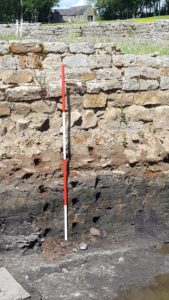One of the most amazing things I love about research is that you are constantly learning, constantly exploring and driving forward understanding. I am so pleased to share a recent publication entitled Unique chemical parameters and microbial activity lead to increased archaeological preservation at the Roman frontier site of Vindolanda UK.
The paper is open access and free to read, from scientific reports and here are five reasons why you should:-
- Microbes are fascinating and we understand so little about how they impact on preservation on artefacts
- Inorganic analysis – such as metals, play a huge part in the activity of microbes and thus preservation
- The diversity of microbes change depending on archaeological context.. and guess what this will impact on preservation
- The graphs are really cool
- It shows we need to understand the chemical and microbiological environment to understand our management practices for the future..


